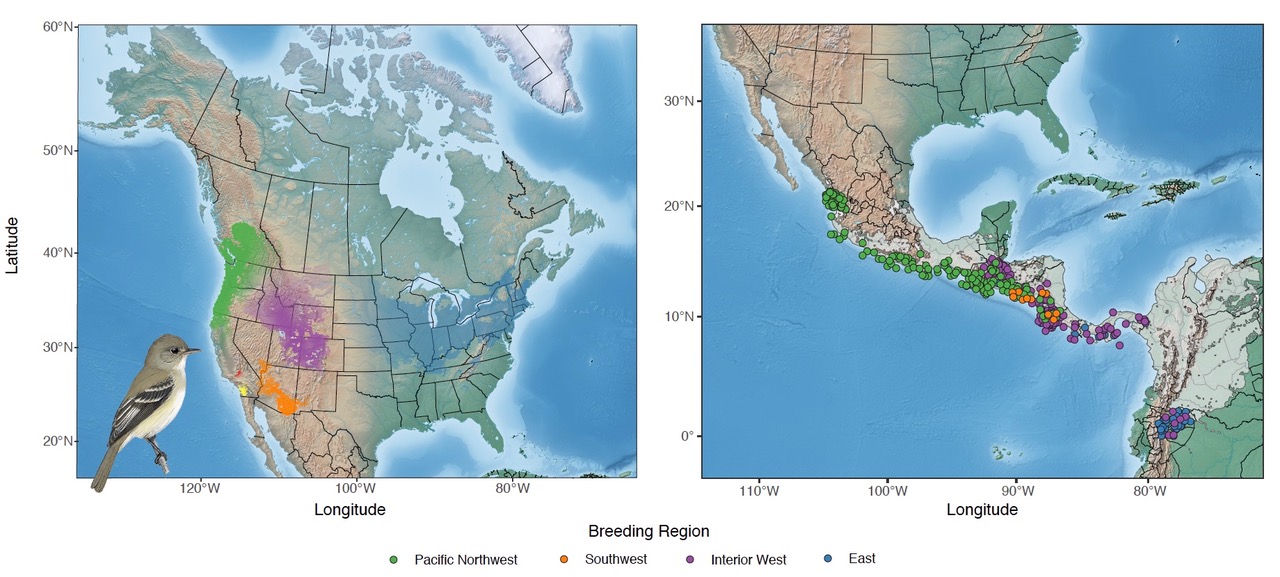Genoscapes, the full annual cycle, and population trends
By creating a genoscape for a species, we can better understand population-specific trends and the threats causing those trends. For example, Willow Flycatchers (Empidonax traillii) have a species range that spans much of the United States and parts of Canada. As a species, Willow Flycatcher populations have declined by over 25% over the last half century (All About Birds). Four main subspecies of the Willow Flycatcher are recognized, each with different population trends. For example, the Southwestern Willow Flycatcher (Empidonax traillii extimus) subspecies is listed as federally endangered.

Our genoscape work identified seven (six shown above; left map) genetically distinct populations of Willow Flycatcher across the breeding range, which includes the four main subspecies already recognized. We also identified where individuals from four of these breeding populations spend the winter in Mexico, Central America, and South America (right map).
The wealth of knowledge a genoscape produces allows us to further explore questions related to population declines and their causes. For instance, we can begin to understand the impacts of climate change on migratory animals. In addition to describing the full annual cycle of the Willow Flycatcher in our 2020 paper, we used Breeding Bird Survey data and climactic data extrapolated from sampling locations to understand how niche breadth impacts population trends.

Figure legend: (A) Maps of the sampling distribution for the four main genetically defined groups of Willow Flycatcher shown separately. (B) The realized climate niche occupied by each group on it breeding and wintering range, as well as both seasons. (C) Demographic trend estimated with Breeding Bird Survey data showing declines in the Pacific NW and Interior NW, but no significant change in the East.
Our results indicate the power of being able to explore population-specific trends as they relate to various environmental stressors. In our case, genetically distinct populations with narrow climate niches across seasons are declining (Interior NW and Pacific NW) more so than populations with more variable or wider climate niches (East).
